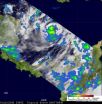(Press-News.org) Sept. 24, 2010 — Biometric systems -- designed to automatically recognize individuals based on biological and behavioral traits such as fingerprints, palm prints, or voice or face recognition -- are "inherently fallible," says a new report by the National Research Council, and no single trait has been identified that is stable and distinctive across all groups. To strengthen the science and improve system effectiveness, additional research is needed at virtually all levels of design and operation.
"For nearly 50 years, the promise of biometrics has outpaced the application of the technology," said Joseph N. Pato, chair of the committee that wrote the report and distinguished technologist at Hewlett-Packard's HP Laboratories, Palo Alto, Calif. "While some biometric systems can be effective for specific tasks, they are not nearly as infallible as their depiction in popular culture might suggest. Bolstering the science is essential to gain a complete understanding of the strengths and limitations of these systems."
Biometric systems are increasingly used to regulate access to facilities, information, and other rights or benefits, but questions persist about their effectiveness as security or surveillance mechanisms. The systems provide "probabilistic results," meaning that confidence in results must be tempered by an understanding of the inherent uncertainty in any given system, the report says. It notes that when the likelihood of an imposter is rare, even systems with very accurate sensors and matching capabilities can have a high false-alarm rate. This could become costly or even dangerous in systems designed to provide heightened security; for example, operators could become lax about dealing with potential threats.
The report identifies numerous sources of uncertainty in the systems that need to be considered in system design and operation. For example, biometric characteristics may vary over an individual's lifetime due to age, stress, disease, or other factors. Technical issues regarding calibration of sensors, degradation of data, and security breaches also contribute to variability in these systems.
Biometric systems need to be designed and evaluated relative to their specific intended purposes and the contexts in which they are being used, the report says. Systems-level considerations are critical to the successful deployment of biometric technologies. Effectiveness depends as much on factors such as the competence of human operators as it does on the underlying technology, engineering, and testing regimes. Well-articulated processes for managing and correcting problems should be in place.
The report notes that careful consideration is needed when using biometric recognition as a component of an overall security system. The merits and risks of biometric recognition relative to other identification and authentication technologies should be considered. Any biometric system selected for security purposes should undergo thorough threat assessments to determine its vulnerabilities to deliberate attacks. Trustworthiness of the biometric recognition process cannot rely on secrecy of data, since an individual's biometric traits can be publicly known or accessed. In addition, secondary screening procedures that are used in the event of a system failure should be just as well-designed as primary systems, the report says.
The report identifies several features that a biometric system should contain. Systems should be designed to anticipate and plan for errors, even if they are expected to be infrequent. Additional research is needed in all aspects of design and operation, from studying the distribution of biometric traits in given populations to understanding how people interact with the technologies. In addition, social, legal, and cultural factors can affect whether these systems are effective and accepted, the report says.
###
The study was funded by the Defense Advanced Research Projects Agency, the Central Intelligence Agency, and the U.S. Department of Homeland Security, with assistance from the National Science Foundation. The National Academy of Sciences, National Academy of Engineering, Institute of Medicine, and National Research Council make up the National Academies. They are private, nonprofit institutions that provide science, technology, and health policy advice under a congressional charter. The Research Council is the principal operating agency of the National Academy of Sciences and the National Academy of Engineering. A committee roster follows.
Copies of Biometric Recognition: Challenges and Opportunities are available from the National Academies Press; tel. 202-334-3313 or 1-800-624-6242 or on the Internet at http://www.nap.edu. Reporters may obtain a copy from the Office of News and Public Information (contacts listed above).
Contacts: Molly Galvin, Senior Media Relations Officer
Christopher White, Media Relations Assistant
Office of News and Public Information
202-334-2138; e-mail
[ This news release and report are available at http://national-academies.org ]
NATIONAL RESEARCH COUNCIL
Division on Engineering and Physical Sciences
Computer Science and Telecommunications Board
Whither Biometrics Committee
Joseph N. Pato (chair)
Distinguished Technologist
Hewlett-Packard Laboratories
Cambridge, Mass.
Bob Blakley
Vice President and Research Director
Burton Group Identity and Privacy Strategies
Gartner
Austin, Texas
Jeanette Blomberg
Research Staff Member
IBM Research, Almaden
San Jose, CA.
Joseph P. Campbell
Senior Member of Technical Staff
Information Systems Technology Group
MIT Lincoln Laboratory
Lexington, Mass.
George T. Duncan
Professor of Statistics, Emeritus
H. John Heinz III College
Carnegie Mellon University
Pittsburgh
George R. Fisher
Principal
George Fisher Advisors LLC
Boston
Steven P. Goldberg*
James and Catherine Denny Professor of Law
Georgetown University Law Center
Washington, D.C.
Peter T. Higgins
Founder
Higgins & Associates, International
Washington, D.C.
Peter B. Imrey
Department of Quantitative Health Sciences
Cleveland Clinic
Professor of Medicine
Cleveland Clinic Lerner College of Medicine of Case Western Reserve University
Cleveland, OH
Anil K. Jain
University Distinguished Professor
Department of Computer Science and Engineering
Michigan State University
East Lansing, MI
Gordon Levin
Staff Engineer
Design and Engineering
Walt Disney World
Lake Buena Vista, Fla.
Lawrence D. Nadel
Fellow
Noblis
Falls Church, Va.
James Wayman
Research Administrator
Office of Graduate Studies and Research
San Jose State University
Pebble Beach, Calif.
STAFF
Lynette Millett
Study Director
* Deceased
END
Basic physical limitations following breast cancer treatment can have far-reaching consequences that substantially affect how long a patient lives.
According to a new study published online in the Journal of the National Cancer Institute, breast cancer survivors with functional limitations – an inability to perform normal daily activities – caused by the disease or its treatment are more likely to die because of overall poorer health.
The scientists found that survivors who reported physical limitations after breast cancer treatment have the same risk of dying from ...
The first cultivar of 'ōhelo berry, a popular native Hawaiian fruit, has been released by U.S. Department of Agriculture (USDA) scientists and their university and industry cooperators.
'Ōhelo (Vaccinium reticulatum Smith) is a small, native Hawaiian shrub in the cranberry family, commonly found at high elevations on the islands of Maui and Hawaii. As people scour the landscape to harvest this delectable berry for use in jam, jelly and pie filling, they unfortunately disrupt the fragile habitats where this plant grows.
In an effort to reduce damage to the ...
CORVALLIS, Ore. – A new study has determined that teenagers who have abortions are no more likely to become depressed or have low self-esteem than their peers whose pregnancies do not end in abortion.
The study conducted by researchers from Oregon State University and University of California, San Francisco, is the first to use both depression and low self-esteem as outcomes with a nationally representative sample of adolescents.
The researchers found that young women in the study who had an abortion were no more likely to become depressed or have low self-esteem within ...
You'd think that people choosing to live near to outdoor recreation amenities would have a lower body mass index or BMI thanks to an increase in all that healthy outdoor activity right on one's doorstep. Yet a new University of Alberta study looking at the relationship between reasons for choosing a neighbourhood to live in, physical activity and BMI, shows that's simply not the case.
In fact researchers found that those who said they'd moved to be closer to outdoor recreation opportunities actually showed a marked increase in BMI over the six years of a longitudinal ...
BOSTON—In the quest to arrest the growth and spread of tumors, there have been many attempts to get cancer genes to ignore their internal instruction manual. In a new study, a team led by Dana-Farber Cancer Institute scientists has created the first molecule able to prevent cancer genes from "hearing" those instructions, stifling the cancer process at its root.
The study, published online by the journal Nature, demonstrates that proteins issuing stop and start commands to a cancer gene – known as epigenetic "reader" proteins – can be targeted for future cancer therapies. ...
With several advanced warfare vehicles and a lineup of exciting technologies, the Office of Naval Research (ONR) will showcase its latest expeditionary equipment at the 2010 Modern Day Marine Exposition scheduled Sept. 28-30 at Quantico Marine Corps Base, Quantico, Va.
Modern Day Marine is one of the world's largest trade shows featuring expeditionary warfare equipment. More than 400 exhibitors and 8,000 attendees are expected to attend the event—now in its 30th year—for an up-close look at equipment and systems that support the U.S. Marine Corps and other allied forces' ...
An instrument on NASA's Aqua satellite noticed increasing colder cloud top temperatures of tropical depression 15 in the south-central Caribbean just before it strengthened into Tropical Storm Matthew late on Sept. 23. The TRMM satellite also spotted heavy rainfall within the system. Matthew is now headed to the western Caribbean and watches and warnings are in place as Matthew may continue to strengthen.
Cloud top temperatures indicate the strength of the storm to forecasters. The colder the cloud top temperatures, the stronger the convection and uplift. When cloud top ...
Towering thunderstorms and heavy rainfall are two things that NASA's CloudSat satellite saw as it passed over Typhoon Malakas, and those two factors confirm a strong storm. NASA's CloudSat satellite's Cloud Profiling Radar can basically slice a tropical cyclone in half and take a look at its clouds and rainfall, and that's what it did when it passed over Typhoon Malakas on Sept. 23.
CloudSat flew over Typhoon Malakas during the daytime on Sept. 23. At that time, Malakas had a minimum central pressure of 965 millibars, maximum winds of around 115 mph (100 knots), and ...
The GOES-13 satellite has been keeping an eye on Tropical Storm Lisa and watched her birth, graduation to depression then tropical storm and back to depression. Now, Lisa has grown back to tropical storm status, but it may be short-lived.
At 11 a.m. EDT on Friday, Sept. 24, Tropical Storm Lisa had maximum sustained winds near 50 mph and she may strengthen and weaken over the weekend, but by Sunday colder waters will zap her energy source and she is forecast to be a depression.
Meanwhile, on Sept. 24, she was still frolicking in the eastern Atlantic, about 320 miles ...
How could the current financial crisis have happened? While fingers have been pointing to greedy banks, subprime-loan officers, and sloppy credit card practices, these are not the only contributors to the economic downturn. A new report in Psychological Science in the Public Interest, a journal of the Association for Psychological Science, examines the psychology of financial decision making, including the role of risk in making economic choices, how individuals behave in stock and credit markets, and how financial crises impact people's well-being.
Risk taking is a ...



